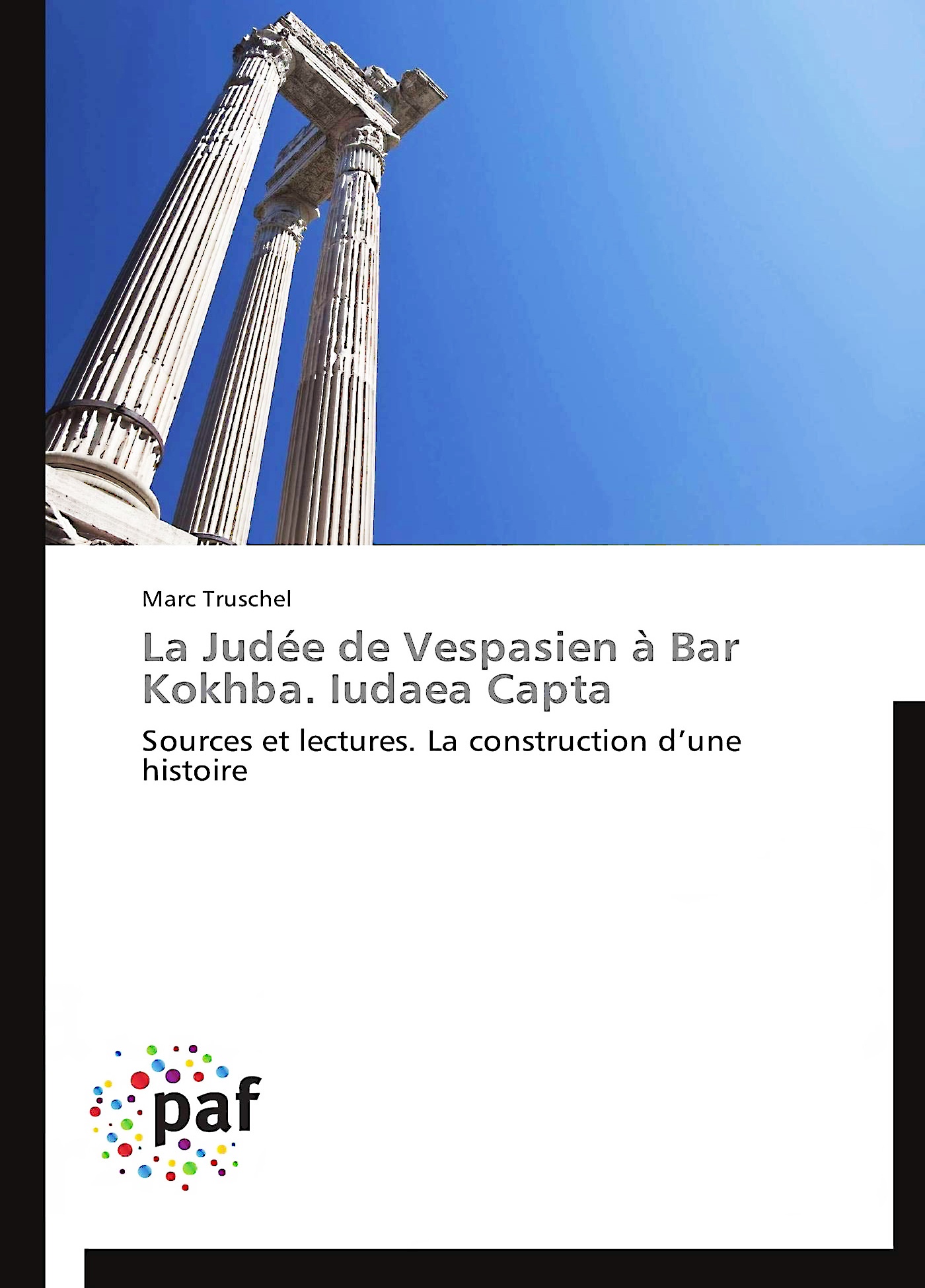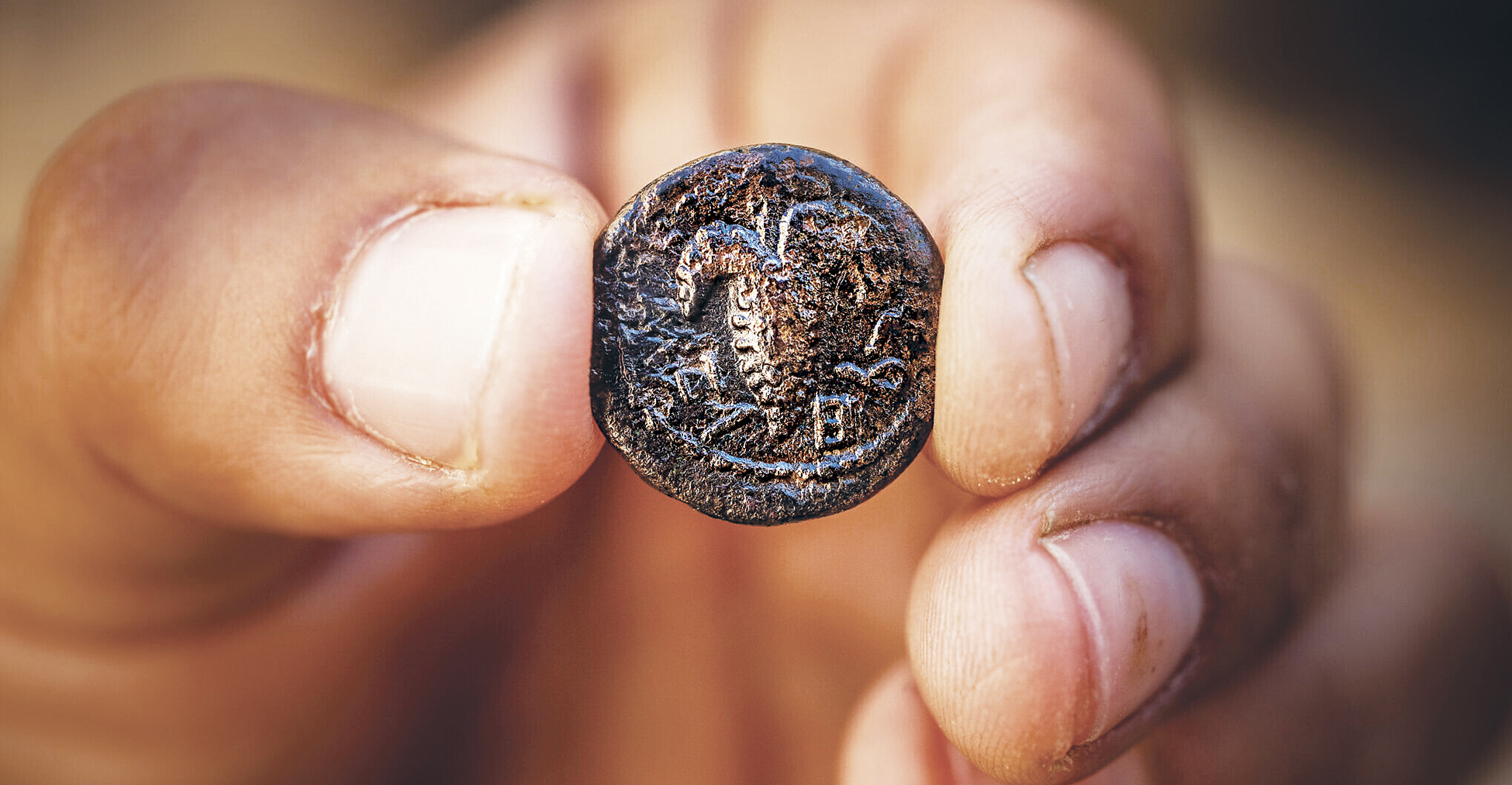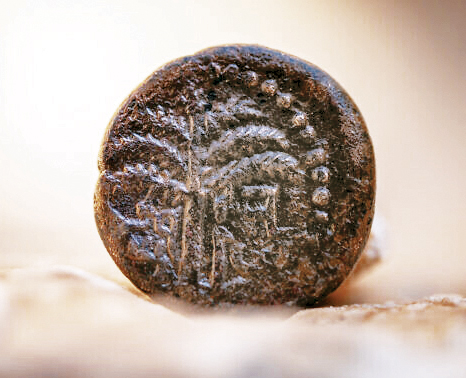
Bible, History, Archaeology
Bible,
History,
Archaeology
Bar Kokhba,
currencies
Jerusalem, May 11, 2020 Lag ba-Omer - a holiday closely linked to the events of the Bar Kokhba war - the Israeli Antiquities Service published a photo of a bronze piece dating back to this period. Bearing the words «Jerusalem year 2», the archaeological service briefly indicated that it had just been dug out of the ground in the famous William Davidson archaeological park, in front of the city of Jerusalem. the foundations of the Temple built by Herod. The news hit like a bombshell in the hushed world of numismatists. The coin is rare in more ways than one.
The different ways in which currencies are discovered
Of the more than 50,000 coins known today to have been minted by Shimon Bar Kokhba's mints, fewer than five have been discovered in Jerusalem.. From the end of the 19th century to the early 1980s, most of the major identified lots were the result of chance discoveries outside excavation campaigns. Most of the monetary treasures were found in the Judean mountains between Hebron and Bethlehem. Precisely where the points of command and resistance to Roman occupation seem to have been located. The discovery in the 1960s of several items of Shimon's correspondence confirms that this area was very active and essential for Jewish military command.
 Detail of the piece discovered in May 2020.
Detail of the piece discovered in May 2020.
Image above: obverse, with the words «Year 2 for the freedom of Israel» around the vine.
Image opposite: the reverse, with «Jerusalem» inscribed under the palm tree © AAI.
The absence of currencies
The virtual absence of Bar Kokhba coins in Jerusalem seems to bear out the fact that the Jewish armies failed to take control of the city. The Xth Legion Fretensis had been installed there since the destruction of the Temple in 70 CE. But our knowledge of the conflict is very incomplete. Our understanding of military operations eludes us almost entirely. Numismatics remains an invaluable tool for finding out more. The presence of these treasures in the Judean mountains suggests that they were intentionally hidden, waiting for better days. The Romans, conquerors of a bloodless country leaving hundreds of thousands dead and as many slaves, forbade the use of coins minted by the rebels. As a result, the coins were abandoned in dramatic circumstances until the present day.
A political project
These coins are of enormous interest to historians, as they provide a wealth of information. They are all the result of strikes on existing coins, whether Roman silver or bronze, or from neighboring Judean cities. The leaders of the revolt no longer had the wealth of the Temple at their disposal to design their own coins. This also meant that no other coins, especially those from Rome, were to circulate in Judea.. The emperor's names, titles and attributes were to be erased. There was a real political will behind this undertaking, the desire to shake off the Roman yoke. Finally, we tend to forget today that minting coins is one of the essential functions of state sovereignty. Coins therefore show that there was a political project in place that lasted over time.
The coins feature slogans proclaiming redemption and freedom for Israel and Jerusalem. They are sometimes backed by a name, Shimon or Shimon the Prince of Israel.. The Hebrew word for nassi raises a number of questions. He is mentioned in the biblical corpus as a ruler who appears at a crucial moment in Israel's history. Some documents from the beginning of the conflict mention the name of a priest, Eleazar, but we can say little more about this character.
A general view of Jerusalem from the Mount of Olives. © Adobe Nezek.
Dating the pieces
Specialists have identified three main chronological series 1. Two series, dated Year 1 and Year 2, can be identified on bronze and silver coins. The third series is no longer dated, but corresponds to years three and four of the conflict. The majority of known coins are undated and correspond to this series.
Why don't we date the pieces any more? Isn't this a sign that we're settling into the conflict and can't see the way out? Should we speak of three and a half years of conflict, as does the Church Father Eusebius, one of the only written sources on the subject, or of four or even more, as more researchers tend to believe today?
The coins bear messages inscribed in paleohebrew characters, like the Hasmonean coins and the coins of the First Jewish War (66-73 CE). However, this spelling is never used in Shimon's correspondence or in any Hebrew or Aramaic documents found from this period. It is therefore more than a stylistic choice. It's likely that not everyone was able to understand this script. On such a mobile medium, it must have given rise to many questions and discussions. In addition, the letters on these coins have their own stylistic characteristics that were not seen before. Finally, the characters are not always inscribed in the expected direction to form the word. They may appear in a clever disorder. It's reasonable to rule out the possibility that these coins were made by ignoramuses, given the care taken to give them meaning. The characters on these coins therefore pose many problems for specialists.
1. The most exhaustive work on the subject is Leo Mildenberg's book, The coinage of Bar Kokhba War, which remains an indispensable tool even though it dates from the 1980s. A new synthesis on the subject is expected, taking into account new discoveries and new approaches to the subject.
Left image: obverse, schematic representation of the Temple destroyed by Titus.
The wavy line above the building would represent the «golden vine» that decorated the entrance to the sanctuary. At the foot of the columns, a sort of ladder could represent the steps leading up to the Temple. Between the two central columns, perhaps the Holy of Holies with the Ark or the table of 12 loaves.
The schematism is explained by the religious ban on depicting the Temple. Around the Temple appears the name «Shimon».
Right image: the reverse, a representation of the four species, lulav, etrog, hadassim, aravot, which evoke the festival of Sukkot. It is associated with the legend: «For the liberation of Jerusalem». © DR.
Engraved motifs on the coins

Image opposite: possible system for minting coins. Public domain.
We are struck by Shimon's insistence on depicting the four species of the Succot festival on his coins, and his repeated references to them in his correspondence. This is perhaps an indication of his desire to convey the deeper messages that his contemporary Shimon bar Yohai (a disciple of Rabbi Aqiva) was disseminating in the Kabbalistic tradition at the time. Among the many interpretations of the word succa, The word «tent» is linked to the notion of profound knowledge (daât in Hebrew) provided by the four plant species. The palm branch represents the spine; the citron, the heart; the myrtle, the eyes; and the willow, the lips of the mouth.. The whole forms a tool for discernment. These symbols provide access to deep, even secret, levels of understanding of the biblical text, decoded by the Sages of Israel who accompanied Shimon in his project for a time. The feast of Lag ba-Omer not only evokes Shimon bar Yohai's coded unveiling of the secrets of the Torah, it also resonates with the martyrdom of the ten great Sages who disappeared at that time.
We understand that we have only just entered the heart of a subject that focuses on the meanings and conceptions of these pieces. Never any human representation, but evocations of the Temple seen as a great garden, that of Eden, with representations of palm trees, vines and its instruments. One festival in particular is evoked, that of Succot and for the first time the frontal, symbolic representation of the Temple. Undeniably, we enter into the depth of Shimon's story through his material achievements.
Bar Kokhba and his staff redefined a new world with their currencies. It outlived them.

Find out more
Marc Truschel, Judea from Vespasian to Bar Kokhba. Iudaea Capta.
Sources and readings. Building a story.
The investigation based on the literary corpus will take the reader on a long journey from the writings of Flavian Rome to those of the early Middle Ages. The book offers new perspectives through its historical analysis of the two conflicts that hit ancient Judea hard.
Presses Académiques Francophones. 270 pages.


 Detail of the piece discovered in May 2020.
Detail of the piece discovered in May 2020.
